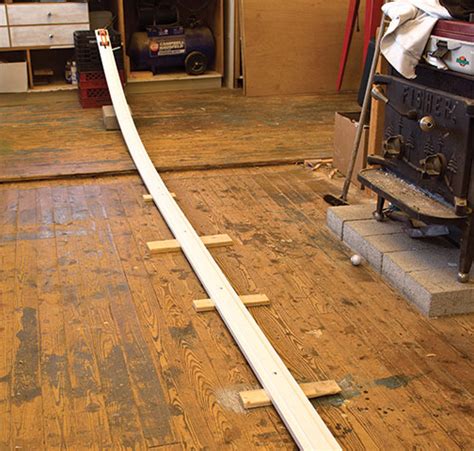The Perfect Pinewood Derby Track: A Parent's Guide
The Pinewood Derby. For many parents, these three words conjure up images of frantic weekend workshops, precise measurements, and the thrill of watching your child's meticulously crafted car zoom down the track. But building a truly perfect Pinewood Derby track is more than just slapping some wood together; it's about ensuring fairness, excitement, and a memorable experience for all participants. This guide will walk you through creating a track that's both competitive and fun, answering common questions along the way.
What Makes a Pinewood Derby Track "Perfect"?
A perfect Pinewood Derby track isn't about favoring one design over another; it's about creating a consistent and fair racing environment. This means minimizing friction, ensuring a smooth run, and eliminating variables that could unfairly impact race outcomes. Key elements include:
- Consistent Track Surface: A smooth, polished track surface minimizes friction and ensures all cars experience similar resistance.
- Accurate Track Alignment: A perfectly straight track, free from bumps or deviations, prevents cars from veering off course or encountering unexpected resistance.
- Consistent Lane Separation: Even lane spacing prevents cars from interfering with each other and ensures fair competition.
- Proper Track Length and Angle: A well-designed track offers an optimal balance between speed and control, providing a thrilling race without excessive speeds.
- Reliable Timing System: A precise timing system guarantees accurate results, adding to the competitive spirit of the event.
How to Build a Perfectly Straight Track?
Achieving a perfectly straight track requires meticulous planning and execution. Here’s a step-by-step guide:
- Choose Your Material: Smooth wood, like plywood or MDF, is ideal. Avoid materials with knots or imperfections.
- Precise Cutting: Use a saw, ensuring the track's sides are perfectly straight and parallel. Accurate measurements are crucial.
- Secure Mounting: Mount the track securely to a sturdy base, ensuring it remains perfectly level throughout the race.
- Surface Preparation: Sand the track surface thoroughly to remove any imperfections and ensure a smooth finish. Consider polishing for added smoothness.
- Alignment Check: Use a level and straight edge to ensure perfect alignment before the race begins.
What's the Best Material for a Pinewood Derby Track?
While wood is the traditional and most common material, there are other options to consider, each with its pros and cons:
- Wood (Plywood or MDF): Readily available, relatively inexpensive, and easy to work with. However, it requires careful sanding and finishing to ensure a smooth surface.
- Aluminum: Offers excellent smoothness and durability but can be more expensive and challenging to work with.
- Plastic (Acrylic or PVC): Provides a smooth surface, but can be more difficult to cut and shape accurately.
How Steep Should the Track Be?
The ideal track angle is a balance between speed and control. A steeper incline leads to faster speeds but can make the race less predictable and potentially dangerous. Generally, a slight incline is recommended – around 1-3 degrees is often considered ideal. Using a level and a protractor, measure the angle carefully.
How to Minimize Friction on the Pinewood Derby Track?
Minimizing friction is crucial for fair racing. Here are some key strategies:
- Smooth Surface: Thorough sanding and polishing of the track surface is paramount.
- Waxing the Track: Applying a thin layer of car wax or silicone-based lubricant to the track can significantly reduce friction.
- Car Maintenance: Ensure the cars themselves are well-lubricated and free from debris.
What Kind of Timing System is Best for a Pinewood Derby?
Accurate timing is essential for fair competition. Options include:
- Manual Timing: Using stopwatches, this method is simple but prone to human error.
- Electronic Timing Systems: These systems provide greater accuracy and consistency, though they can be more expensive. Many commercially available systems are available.
By following these guidelines, you can create a perfect Pinewood Derby track that ensures fair competition, thrills participants, and creates a lasting memory for your child and their fellow racers. Remember, the goal is to provide a fun and exciting experience for everyone involved, regardless of the outcome.

